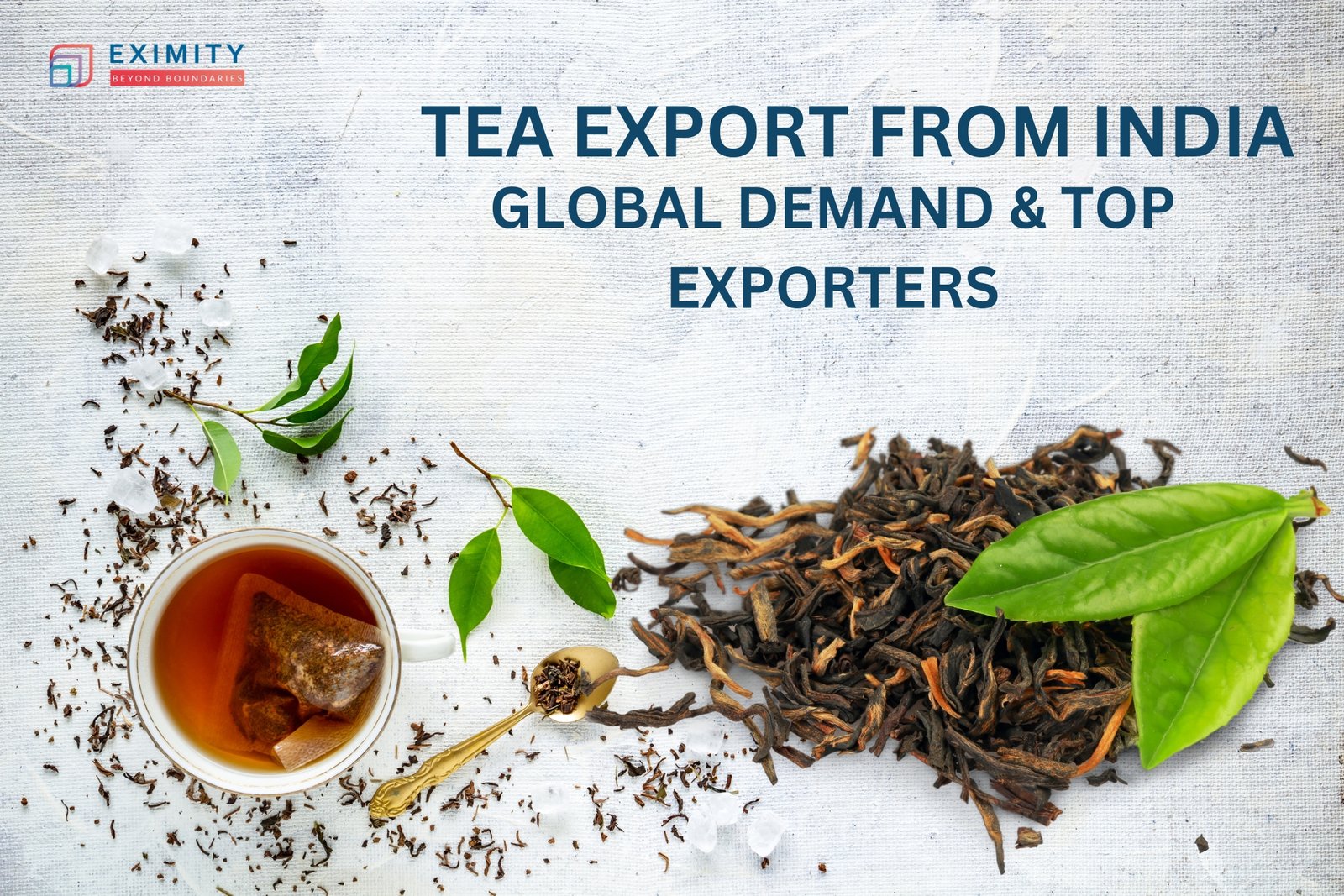India’s tea culture is more than just a beverage—it’s a tradition, a story, and a legacy. With roots tracing back to ancient times, Indian tea has made its way into millions of households around the world. The surge in tea export from India reflects not only the global love for this drink but also the trust in India’s quality and consistency.
Be it the flavorful chai or the aromatic Darjeeling, tea is a very popular and profitable business in India. Today, India is one of the largest tea exporter across the globe, catering to both premium and mass markets.
Tea Export from India: Current Trends & Global Demand
The India tea exports industry has witnessed steady growth in the last few years. In 2023 alone, India exported over 230 million kilograms of tea, making its mark in markets like Russia, Iran, the UK, and the UAE.
With the change in wellness trends and sustainable farming practices, international buyers tend to go with teas that not only boast flavor but are ethically sourced as well. This trend is quite beneficial to tea exporters from India.
Largest Exporter of Tea: Where Does India Stand?
While India loses in bulk CTC (Crush, Tear, Curl) exports, it excels in specialty teas such as Darjeeling, Assam, and Nilgiri.
India continues to remain one of the top choices for international importers and retailers and thus retains its position among the highest tea exporters in the world, owing to its diversity in flavor and quality.
Top Tea Production State in India
With production capacity, Assam tea takes the crown as India’s tea production state. Negatively reviewed as a strong and malty, Assam tea remains a staple in English Breakfast blends.
West Bengal’s Darjeeling tea, known for its distinctive floral and musky aroma, comes next. Tamil Nadu, especially the Nilgiri region, is also a major contributor to tea export from India, with Tamilnadu Export playing a significant role in meeting global demand for premium tea varieties.
These states form the backbone of Indian tea export by offering distinct taste profiles to suit various global markets.
Indian Tea Exporters: Who’s Leading the Industry?
The top Indian tea exporters are single-handedly responsible for the flourishing tea export business. Tata Tea, Wagh Bakri, and Goodricke are household names that resonate with their quality and heritage.
But it isn’t all large players. A number of medium-sized tea exporter companies and startups are enjoying success by serving organic, fair-trade, and flavored teas. This attention to detail and compliance catapults Indian teas into gourmet sections abroad.
The Process to Export Tea from India
Looking to export tea from India? Here’s what you need:
- Business Registration and FSSAI License for food safety
- Import Export Code (IEC) from DGFT.
- APEDA Registration for tea exporters
- Packaging, labeling, and documentation per destination country
- International freight and customs clearance support
With these steps, Indian tea exporters can seamlessly enter the international marketplace and grow their brand globally.
Tea and Coffee Exports from India: A Shared Global Stage
While tea export from India still remain unrivaled, coffee exports from India are also gaining recognition.
Now, some exporters are more flexible, selling both tea and coffee to international buyers. This single point of sale offers bundled trade opportunities, strengthening India’s position in the global beverage market.
Challenges in the Trade of Tea & How Exporters Overcome Them
Despite its popularity, the trade of tea does come with challenges:
- Climate impact on crop yields
- Price fluctuations in the international market
- Strict compliance and quality certifications
- Rising packaging and logistics costs
Still, modern tea exporters are overcoming these with sustainable farming, smart irrigation, and digital B2B outreach. These efforts continue to elevate India as the highest exporter of tea in the premium and specialty category.
The Role of Largest Ports in India for Import Export Business
Future of Indian Tea Exports: A Brewing Opportunity
The future looks bright for tea export from India. With rising global interest in immunity-boosting, herbal, and organic beverages, Indian tea stands poised for even greater demand.
There is an anticipated growth in exports of green tea, white tea, and herbal infusions, further augmented by the small exporters’ ability to reach international markets more effectively in this new age of digital trade.
As one of the largest exporters of tea, India is poised to strengthen their global leadership in the tea market.
Whether you’re a grower, trader, or entrepreneur, the global tea market is open for business—and India has the products the world wants.
Contact us today and discover how to start your journey in the tea export from India sector!
FAQs about Tea Export from India
Can I export tea from India?
Yes, you can export tea from India by obtaining an Import Export Code (IEC), registering with APEDA, and complying with packaging and food safety standards. With growing global demand, many Indian tea exporters are finding success by offering high-quality blends from regions like Assam and Darjeeling.
What is the biggest exporter of tea?
Kenya is currently the biggest exporter of tea by volume, primarily known for its strong black CTC tea. However, India remains one of the largest exporters of tea globally, especially valued for its diverse varieties like Assam, Darjeeling, and Nilgiri. The combination of quality, tradition, and variety makes tea export from India a key player in the global tea trade.
Who is the largest consumer of tea?
China is the largest consumer of tea in the world, followed closely by India. While India is one of the largest exporters of tea, it also consumes a significant portion of its own production, with millions of people enjoying tea daily as part of their culture and lifestyle.

